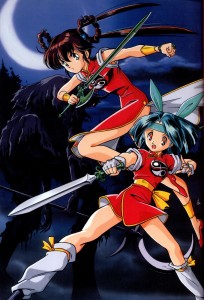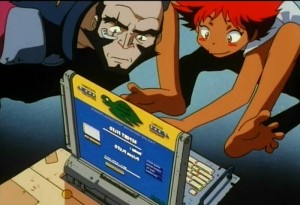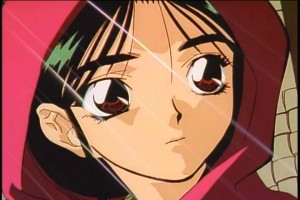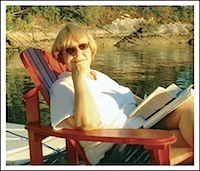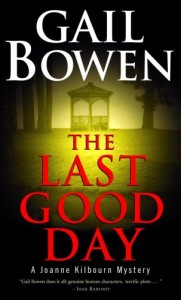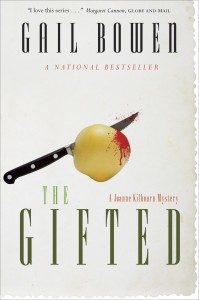Guest Post by Hayden Trenholm
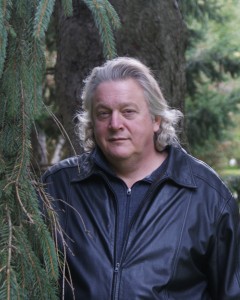 For me, fiction is about a conversation we have with each other and with the world; science fiction is a conversation we have with the future. No matter how far away in space and time, science fiction is in the realm of the possible – decisions that we take, individually and collectively, will either bring that future about or prevent it from happening. Fantasy, on the other hand, is in the form of a wish, or even a dream, about worlds that never have and never could exist. No decision I make can defeat Voldemort or destroy the One Ring.
For me, fiction is about a conversation we have with each other and with the world; science fiction is a conversation we have with the future. No matter how far away in space and time, science fiction is in the realm of the possible – decisions that we take, individually and collectively, will either bring that future about or prevent it from happening. Fantasy, on the other hand, is in the form of a wish, or even a dream, about worlds that never have and never could exist. No decision I make can defeat Voldemort or destroy the One Ring.
More than that, science fiction relies on the laws and principles of science both for world building and for problem solving. That means cause and effect, the conservation of matter and energy, measurability and certainty. The laws of physics can’t be broken on a whim and mysterious and mystical “forces’ can’t be called on to save the day. Star Trek (“I kenna break the laws o’ physics, Captain”) is science fiction; Star Wars (“May the Force be with you, Luke”) is fantasy.
So to write good SF you need a basic understanding of, and interest in, science. Make an error in the science and someone – probably an editor but certainly a fan – will point it out to you. If science bores you and fact-checking is an abomination, maybe writing science fiction is not for you. If you feel your grade 11 chemistry doesn’t quite ground you enough, try some of the Writing Science Fiction Series books from Writers’ Digest. Edited by people like Ben Bova (both a scientist and science fiction writer), these will give you lots of basic information on space travel or world-building. Robert Zubrin has some good books on near-Earth space travel and Michio Kaku’s “Physics of the Impossible“ lays out the law of what can and cannot be accomplished – and when.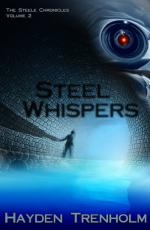
Having said that, one probably shouldn’t be dogmatic about it. A lot of the fun in writing science fiction lies in exploring the gaps between what we do and don’t know. In “The Steele Chronicles,” my trilogy of books from Bundoran Press, I read a lot about “junk DNA,’ genetic causality and the theory of mind-machine interfaces to ground my near-future police procedurals. Discovering that there were several as yet unproven theories about the function of junk or inactive DNA, I was able to pick the one that best suited the story I wanted to tell.
That’s the other thing to remember – science fiction is first and foremost fiction. While the science background is critical, you still have to tell a good story with strong and interesting characters. The story also has to be about something. Defining Diana was, for me, about the nature of human identity: who we are and, more importantly, why are we who we are. By addressing that theme, I could look at issues of choice and destiny – free will versus programming -in self-definition.
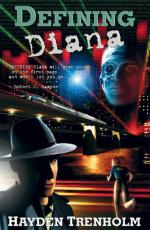 The choice of story is, of course, impacted by the genre. Mystery novels have to have a mystery (usually a murder) as the core problem to be solved and romance has a broken relationship at its heart. In science fiction, science and technology are more than simply background, they are central to the main conflict. The main character may not be a scientist but the problem they face must be grounded in something that is essentially “scientific’ in nature. Isaac Asimov used to say the way to tell if a story is science fiction is to remove the science from the story; if it’s still a story it wasn’t SF to begin with.
The choice of story is, of course, impacted by the genre. Mystery novels have to have a mystery (usually a murder) as the core problem to be solved and romance has a broken relationship at its heart. In science fiction, science and technology are more than simply background, they are central to the main conflict. The main character may not be a scientist but the problem they face must be grounded in something that is essentially “scientific’ in nature. Isaac Asimov used to say the way to tell if a story is science fiction is to remove the science from the story; if it’s still a story it wasn’t SF to begin with.
Of course, it isn’t all about physics. As I already mentioned, my novels were mostly immersed in biology and theories of mind. On the other hand, my short stories have often revolved around political or anthropological questions. In my five Arakan universe stories, I wondered what power ideas – especially those imported from “alien societies’ – might have to change a culture. In that case the alien society was human and the cultural element was music. But, of course, what I was really talking about was how multiculturalism might change the way we live and the values we have.
There are, of course, many sub genres of science fiction, each with their own rules and regulations. So-called “mundane’ SF demands stories confine themselves to known facts and well-grounded theories (remember: in science, theories are never proven, merely not disproven yet). Post-singularity science fiction posits a point at which we can no longer predict the future because advances (usually in the area of artificial intelligence) have outstripped the ability of the human mind to understand them. Space opera routinely permits faster-than-light travel without worrying too much about the physics that might be involved – though most writers try to give it some kind of scientific gloss involving black holes, anti-matter or wormholes.
Nonetheless, they all have those basic things I listed at the heart of the story – cause and effect, adherence to the basic laws of physics, and a reliance on reason and human action to get things done. Even in the most pessimistic post-apocalyptic novels, where all our problems (environmental, political, economic) may have arisen from the misuse of technology, science fiction will still rely on science to find a way through, rather than falling back on a mystical return to nature or the power of prayer.
To learn more about my views on writing and other topics, visit my web-site at www.haydentrenholm.com or my blog at http://bundoransf.wordpress.com

